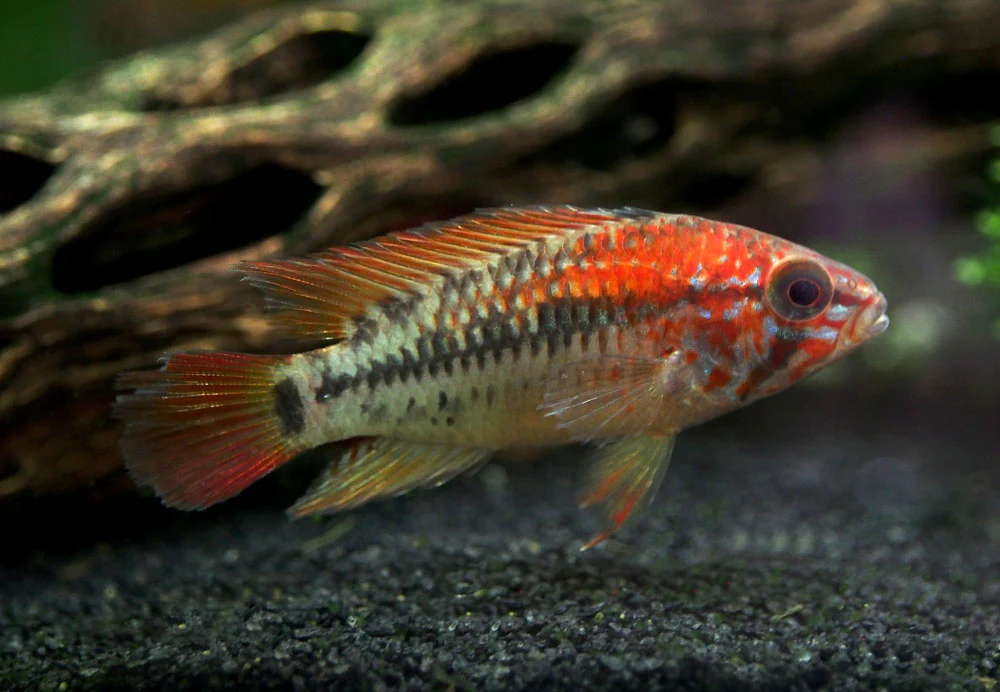
Size
Can grow up to 2 inches in length.
Physical Characteristics and Behavior
The red-shoulder dwarf cichlid is easily recognised thanks to its stunning red and blue facial pattern. Both sexes are capable of exhibiting dazzling colors, albeit men do so more frequently than women. Males with mature bodies have long, sweeping fins and a squared-off tail. Its dorsal fins spike outward from its back. The habitat that has a sandy bottom, caverns, driftwood, stones, and a sizable swimming space is preferred by this colorful fish.
As Pet

- Care
Apistogramma macmasteri typically lives in slow-moving, shallow streams with leaf litter at the streambed. This species, like the majority of American cichlids, is versatile and not very demanding, making them good for beginning aquarists. To survive for a long time, though, it needs a fair lot of care. To help them feel at home in their new environment, you must provide them with a few essentials.
- Tank Size
How many dwarf cichlids you intend to keep will determine the size of the tank. For instance, a tank that is at least 20 gallons long (30′′ x 12′′ x 12′′) is sufficient for a pair; a bigger tank is required for a group. Despite being little as adults, they require more space to set up territories. Furthermore, they are rather energetic and active, thus a bigger tank is always preferable.
- Decorations (Plants and Substrate)
These miniature cichlids are frequently observed in areas where leaf litter makes up the substrate. To mimic their natural behavior, add dense plantings and lots of hiding places, such as beech, oak, driftwood, caves, and rocks with a soft, sand-like substrate. The best lighting is low light. Additionally, you can add live tropical plants. All of the species from Microsorum, Cryptocoryne, and other genera are excellent choices.
- Diet
They naturally consume meat. The majority of them consume invertebrates near the creek’s bottom in the wild. By giving your fish a diversified diet of bloodworms, brine shrimp, Daphnia, and tubifex, you may reproduce that diet in an aquarium. We advise utilizing premium flakes as their main source of nutrition, but you must first train them to eat flakes. Instead of serving them one large meal, it is advised to give them several smaller ones to prevent any digestive issues.
- Water Conditions
The conditions that this species needs to survive are as follows: the tank holds 30 gallons; the water’s temperature ranges from 72 to 86 degrees Fahrenheit; the pH ranges from 6 to 7; and the hardness is 15 grains per gallon.
Table





